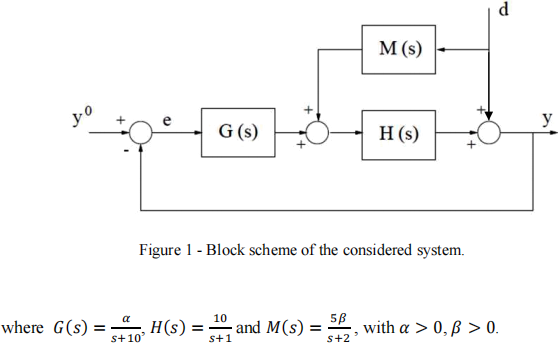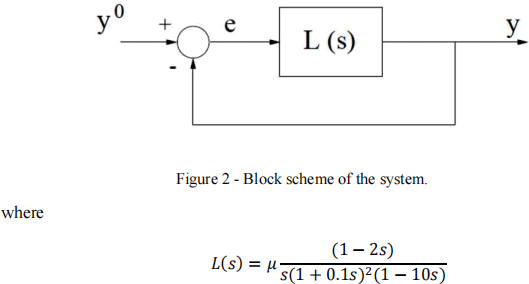ELEC0021 2019
Hello, dear friend, you can consult us at any time if you have any questions, add WeChat: daixieit
ELEC216P
ELEC0021 2019
Answer 2 questions from Section A and 2 questions from section B.
Answer questions from Section A and Section B in separate answer books
Section A
1. Consider the system represented by the block scheme in Figure 1:

(a) Determine the transfer function between the input variable y0 and the output variable y. [5 marks]
(b) Determine the transfer function between the disturbance variable d and the error variable e. [5 marks]
(c) Verify if the closed loop system is asymptotically stable for the given feasible values of a and β. [5 marks]
(d) Compute (if possible) the values of β > 0 so that the error e is null in steady-state for unitary step contributions of the disturbance variable d. [5 marks]
(e) What is the steady state response of an asymptotically stable system described by a transfer
function G(s)to a harmonic cosine input cos(幼(-)t), with unit amplitude and frequency 幼 =
幼(-)? [5 marks]
2. Consider the system represented by the block scheme in Figure 2:

(a) Sketch the asymptotic Bode diagram for the system with μ = 1 (using the provided logarithmic chart). [15 marks]
(b) Determine (if any) the values of the gain μ for which the closed loop system is asymptotically stable. [10 marks]
3. Consider the dynamic system described by the following transfer function
(s − 1)
T(s) =
(s2 + 4s+ 3)
(a) Determine, if it is possible (and justify), the steady state value of the system output y(t) starting from null initial conditions and with unitary step input (u(t) = 1(t)). [5 marks]
(b) Determine the analytic expression in the time domain of the system output y(t)
starting from null initial conditions, when the input is
u(t) = − 2 × 1(t) [5 marks]
(c) By exploiting the result obtained in the answer to question 3.b), derive the
analytic expression in the time domain of the system output y(t) starting from null initial conditions, when the input is
u(t) = − 2δ(t),
where δ(t − t0) is the unitary impulse function at time t0. Hint: use the properties of the derivative in time domain of the Laplace transform. [5 marks]
(d) A system is described by the following characteristic equation: CE(s) = s4 + 5s3 + (9 + K)s2 + 7s+ 2
Analyse the stability properties of the system depending on the parameter K ∈ ℝ . [10 marks]
Section B
Questions should be answered using code in Java, where appropriate, as the relevant Object- Oriented Language.
4. (a) What is the difference between the Java approach in compiling programs and that of other programming languages such as C, C++, Objective-C, etc.? What is the key advantage of the Java approach? [5 marks]
(b) Explain how constructors are called in a class inheritance hierarchy. Write the constructor of class Point, then of class Circle which extends class Point, and then of class Cylinder which extends class Circle. [8 marks]
(c) Write a FactorialCalculator class that provides methods for calculating the factorial n! of a non-negative integer n in both iterative and recursive fashion. Write also an excerpt of code that calculates the time it takes to execute such a method. Which one of the two methods will execute faster for high values of n and why? [12 marks]
5. (a) Explain the concept of class inheritance and discuss the benefits it brings to object-oriented software engineering. [5 marks]
(b) Write first pseudo-code and then Java code for the removeFromBack method of the List class which uses the ListNode self-referential class. [13 marks]
(c) What is a stack data structure? Show how a Stack class can be implemented from a List class through inheritance. [7 marks]
6. (a) What is concurrent program execution and why is it necessary? Explain how Java supports concurrency through the Thread class. [8 marks]
(b) Explain first how the bubble sort algorithm works. Then write the bubbleSort method of a Sort class that implements the bubble sort algorithm for an array of integer numbers where the array is an instance variable of the Sort class. [12 marks]
(c) Calculate the best case complexity of a bubble sort algorithm, i.e. when the array is already sorted. [5 marks]
2023-07-19